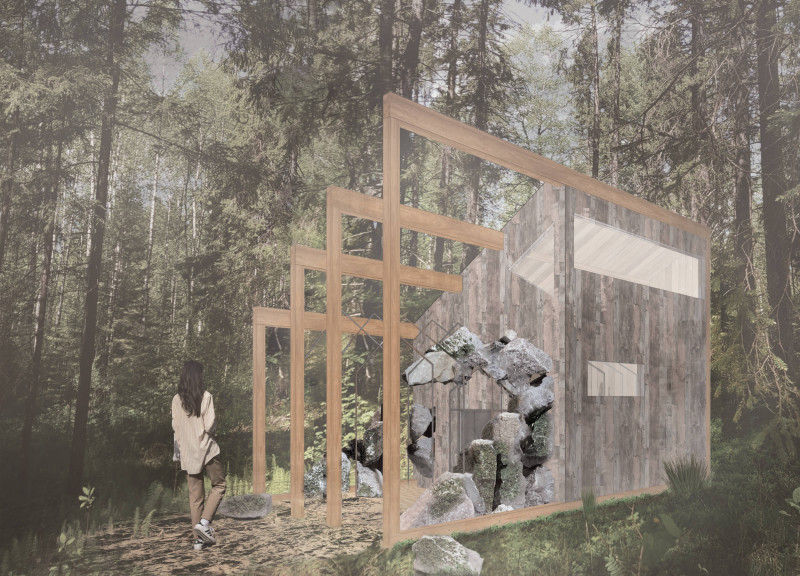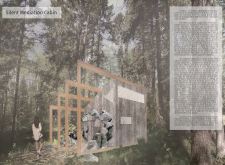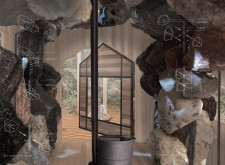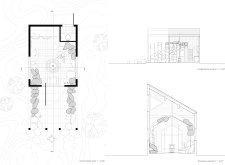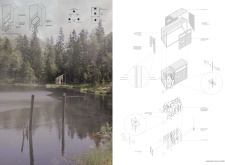5 key facts about this project
At its core, the Silent Meditation Cabin represents a harmonious relationship between architecture and nature. The project integrates seamlessly into its natural setting, showcasing sustainable design principles through the careful selection of materials and its overall form. The structure utilizes reclaimed timber that not only provides warmth and texture but also emphasizes a commitment to environmental sustainability. This choice of material connects the cabin to its ecological context, allowing it to resonate with the surrounding landscape. Alongside timber, raw stone is employed to create internal walls and distinctive rock formations, further reinforcing the structure’s connection to the earth.
The primary function of the Silent Meditation Cabin is to provide a space for meditation, contemplation, and quiet reflection. The layout is deliberately segmented into distinct areas, each serving a specific purpose. At the heart of the cabin is a meditation space defined by large openings that invite natural light and foster a serene atmosphere. This central area supports both individual practices and group gatherings, facilitating a sense of community among users while allowing for personal introspection.
One of the unique design approaches employed in this project is the incorporation of large glass panels throughout the structure. These expansive windows help to dissolve the boundaries between the interior and the exterior, encouraging users to experience the cabin as part of the natural environment. This openness not only enhances the aesthetic appeal but also allows for dynamic interactions with the changing seasons and weather, which promote a deeper connection to nature.
The spatial organization of the cabin encourages users to navigate through a series of environments that awaken the senses. The merging of various materials contributes to this sensory experience—smooth timber juxtaposed with rough stone fosters an engaging atmosphere that reflects the duality of tranquility and ruggedness found in nature. This combination of textures and materials is important in creating a welcoming and grounding space where individuals can feel comfortable in their contemplation.
Furthermore, the Silent Meditation Cabin emphasizes impermanence, a fundamental aspect of many meditative practices. The organic nature of the materials used highlights the transient qualities of life, serving as a reminder of the constant change in our surroundings. This thoughtful consideration of materiality adds layers of meaning to the architectural design, inviting users to reflect not only on their immediate experience but also on the broader themes of existence.
Overall, the Silent Meditation Cabin exemplifies how architecture can respond to its environment and serve meaningful functions in people's lives. The unique aspects of its design—such as the careful integration of natural materials, the emphasis on sensory experiences, and the thoughtful organization of space—collectively contribute to an environment that nurtures meditation and mindfulness. This project stands as a testament to the potential of architecture to create spaces that inspire reflection and foster a deeper connection to both nature and the self.
For those interested in exploring the intricate details of the Silent Meditation Cabin, including architectural plans, sections, and design ideas that illustrate the underlying philosophy of the project, further investigation into the project presentation is highly encouraged. Engaging with these elements can provide a more comprehensive understanding of how architecture can empower individuals and enrich their experiences in the natural world.


